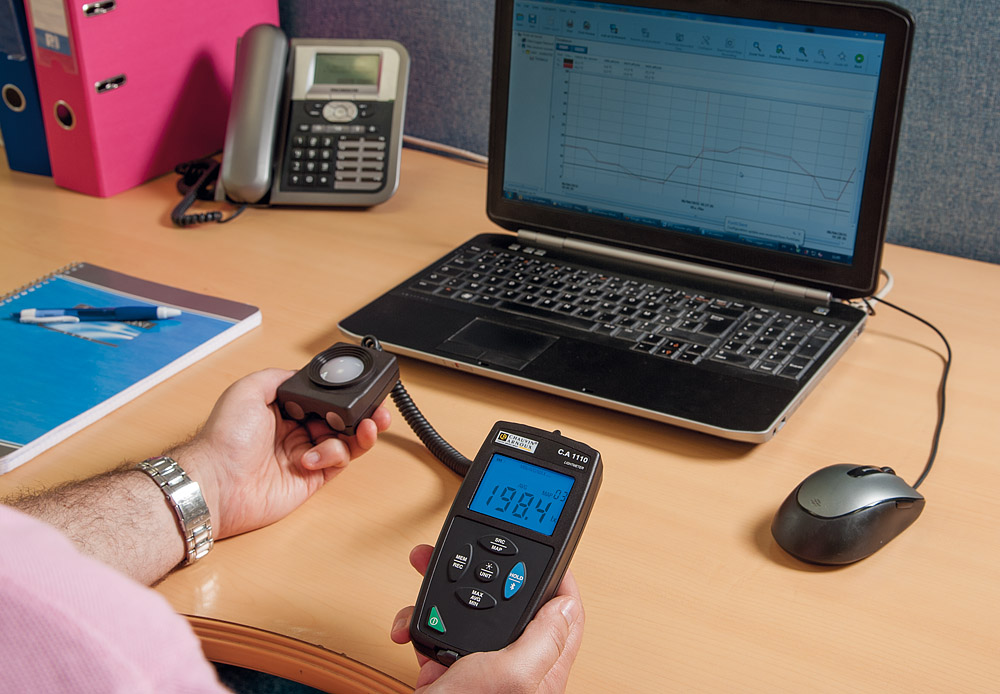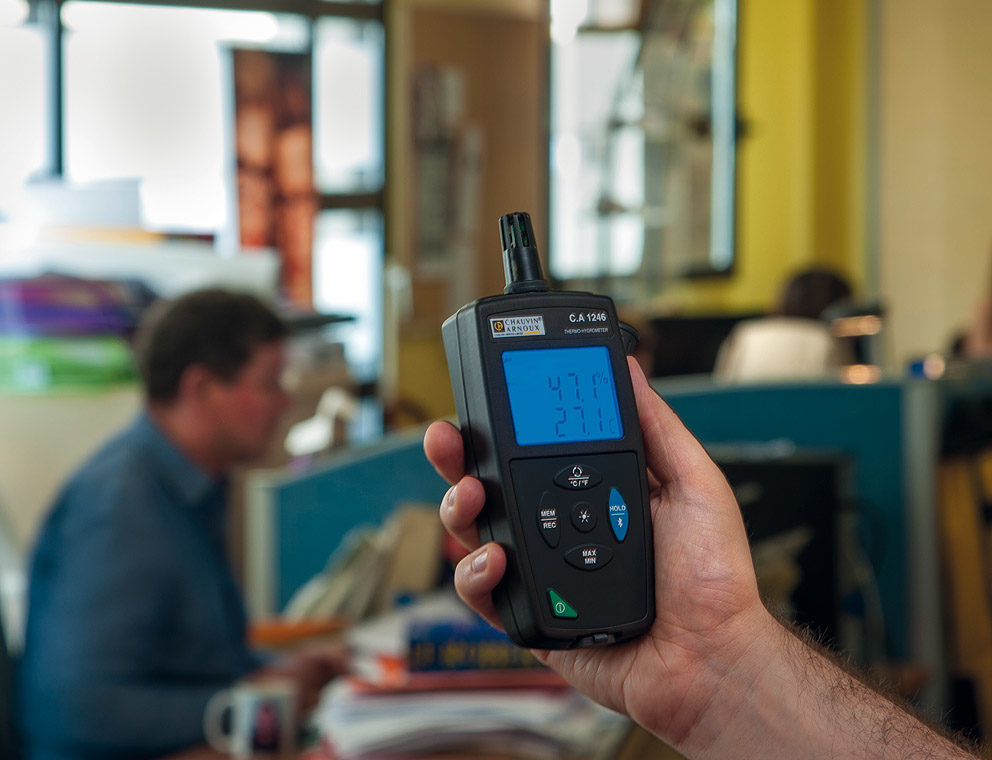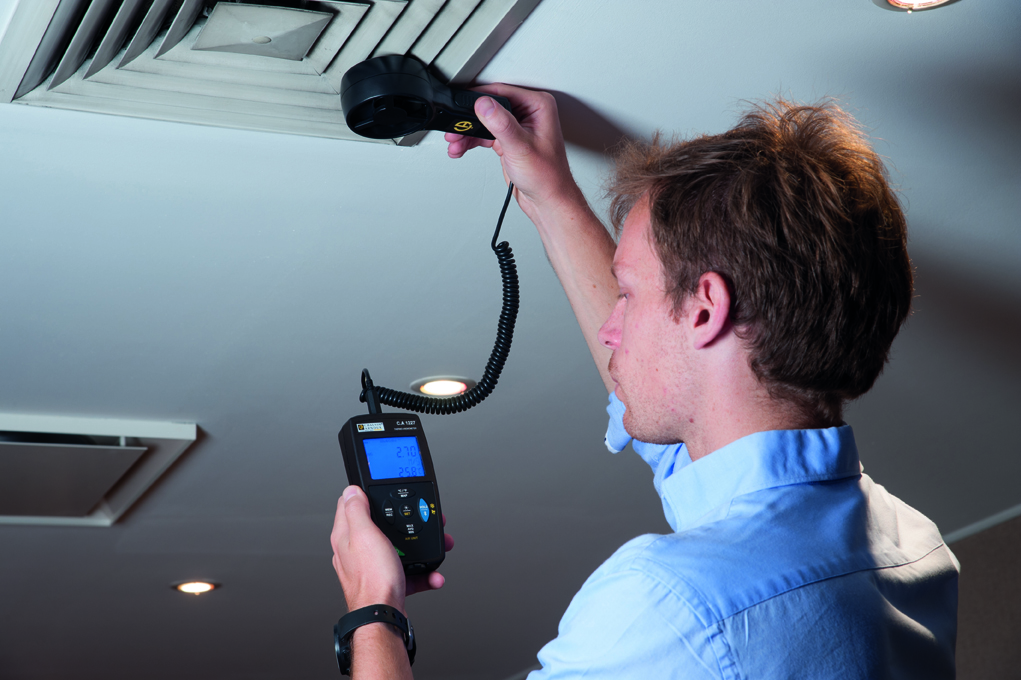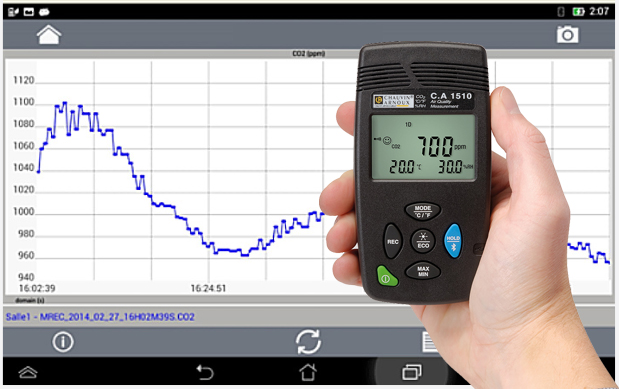Improving Building Energy Efficiency through Environmental Testing
There are a variety of environmental parameters that should be checked when considering the overall health and operation of a typical office building or industrial facility where people spend a large part of their day. However, keeping these parameters in a safe range not only provides for the health of the workers, but also the efficiency and cost of running the operation. Julian Grant, General Manager for Chauvin Arnoux UK, looks at how the amount of energy consumed in a building is greatly influenced by the indoor environmental conditions.
Temperature, ventilation, and the lighting environment are key parameters effecting health, productivity, and the comfort of the occupants. Studies have shown that the financial impact of a poor indoor environment for the employer, the building proprietor, and for occupants, are frequently substantially higher than the cost of the energy used to run the building. It has also been proven that proper indoor ecological quality can improve overall work performance as well as reducing absenteeism.
Apart from good environmental parameters contributing to lower energy costs and employee wellbeing, there are, of course, standards and guidance such as The Workplace (Health, Safety and Welfare) Regulations 1992, HSE Thermal Comfort guidance, EH40/2005 Workplace exposure limits, and the CIBSE SLL Code for Lighting. These, among other things, discuss temperature, humidity, air flow, carbon dioxide (CO2) and lighting levels.
The ability to measure and now record these parameters has improved significantly over the years, but along with this, the monitoring requirements have changed. For example, in the past measuring natural, incandescent, and florescent lighting levels was probably all that the average facility manager required, but today, with the increasing use of LED lighting, due to its improved energy efficiency and lifespan, we also need to be able to monitor those.

Figures show that LED lighting can reduce lighting energy costs by up to 90%, and with those costs estimated as often accounting for up to 40% of a facilities electricity bill, that is a significant saving. Compared with a regular halogen bulb, LEDs can also last 25 times longer, with a typical lifespan of up to 50,000 hours, which is another major driver in the shift toward their use. Thankfully, modern light meters offer the capability to select the type of lighting they are monitoring, with built in spectral and incidence correction, and display the measurement in Lux, as well as providing mapping functionality to ensure adequate lighting coverage throughout the facility. From an energy efficiency point of view, light level mapping is also important to ensure no particular area is over lit.
Another valuable measurement capability is the ability to track the minimum, maximum and average lighting of a given area over a period of time, a normal work day for example, and data logging light meters are available to do this, with associated PC software to assist in the production of reports and provision of accurate record storage. Most meters also offer fixed and removable light sensors to assist in the proper location for monitoring.

Temperature and Humidity are two other very common measurements taken in a normal work environment, and typically, these two parameters can be found in a single meter called a thermo-hygrometer. With temperature display in Centigrade simultaneous to the measurement and display of relative humidity as a percentage, and some also offering the added capability to display dew point temperature.
Test instruments of this type employ multiple line displays, perhaps showing all three measurements or the ability to scroll through them, and as with modern light meters, the ability to track minimum, maximum and average values, as well as record them over time, is a helpful feature. This enables parameters to be accurately monitored during periods when staff are present and not, for example, ensuring HVAC systems are set to adjust temperature up and down accordingly to maximize energy efficiency. 46% of SME energy use was recently reported as being out of hours in a survey of 6000 British Gas Smart meters, much of which would have been attributed to unnecessary heat and light during periods when no staff were present.

Air flow measurement provided by a meter called an anemometer is a valuable tool to monitor the effectiveness of the building’s HVAC system. Most modern anemometers also incorporate temperature measurement as well as air flow and wind speed. To accurately measure the flow from a typical air vent or grill, an accessory to the anemometer called an air flow hood, which controls the measurement area for the anemometer, is also used. Usually both intake and output air flow measurements are taken to profile the flow and the balance of the system.
As much as 70% of the problems associated with HVAC efficiency are due to improper air flow, and again mapping would be an almost necessary function when choosing an anemometer today. This allows the operator to take measurements at each and every air vent, storing the minimum, maximum and average readings for each particular vent. At the completion of the measurement process this information can then be downloaded and a “map” of the system graphically presented. This is a great tool to assist the technician in properly balancing the system.
Another measurement to consider is that of air quality inside a building, which depends on the concentrations of contaminants, such as gases and particles, and how much fresh air is brought in through its ventilation system thus diluting and removing them. A main gas to monitor is Carbon Dioxide (CO2) which is obviously produced as part of any combustion processes, but also when people breathe. Each exhaled breath by an average adult contains 35,000 or more parts per million (ppm) of CO2 – 100 times higher than is typically found in outside air. The CO2 levels in the air outside a building are usually 350 to 450 ppm.

The CO2 concentration in an occupied indoor area indicates if the building’s air handling and balance is appropriate – that is, if the optimal amount of outside air is being mixed with air that has been circulating in the building. Thankfully, several cost-effective CO2 meter/loggers are now available to monitor this gas, along with temperature and humidity. Additional capability found in some of these meters is the ability to set alarm levels to warn occupants when CO2 levels exceed safe levels.
In conclusion, environmental testing is clearly required for a variety of reasons, including its ability to highlight inefficiencies, save money, and reduce a facilities carbon footprint. Thankfully, there are a variety of instruments available today to help the facility manager achieve this goal.

